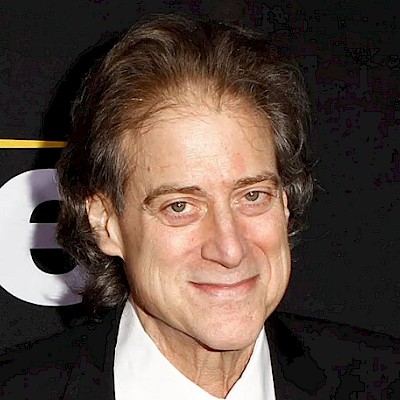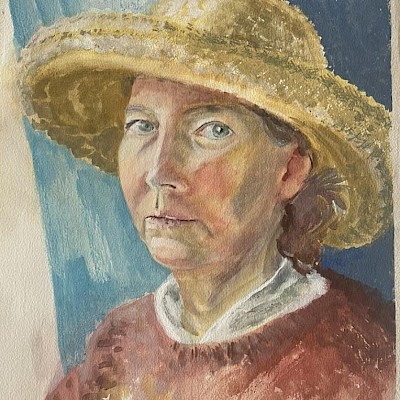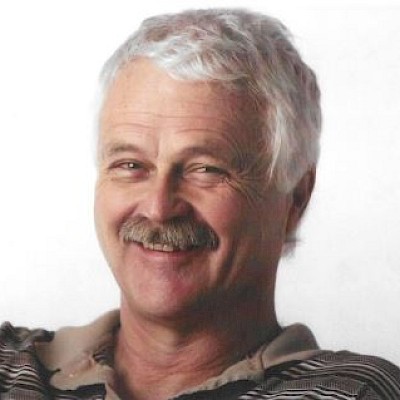Bill Pinella, a guiding force behind The Press Democrat’s sports section for nearly two decades and a beloved editor over his 45-year career in newsrooms, where close friends called him “Sweet,” died November 15, 2023.
He was 76 and had lived for years with Parkinson’s disease.
At The Press Democrat, as assistant sports editor from 1994 until his retirement in 2012, Pinella was chief among the PD’s many unsung heroes. He was the brace behind writers — and at times the brains — but was content to remain in the background.
He stayed late on Thanksgiving night to read copy about night games, and he helped lay out the sports pages because daily newspapers don’t take a day off for holidays. He worked New Year’s Eve because someone had to be in charge. He was honored to do it.
“For many years Bill and I worked in a tiny office, face-to-face with our desks jammed together,” said former Press Democrat sports editor George Manes. “You learn a lot about a person that way and I learned to admire his humor, calm demeanor and steady commitment to our work. He was a whiz on deadline, corralling recalcitrant, and sometimes ornery, reporters, banging out headlines, editing copy and transforming the often-chaotic mess of daily journalism into a coherent, respected seven-day-a-week sports section.”
He was “a man of soft edges” in a profession where elbows and egos can dominate, said retired PD columnist Chris Smith. He was a salve and support, especially, for his reporters.
“One thing people need to understand about writers and reporters: We tend to get stressed out,” said Press Democrat staff writer and former sports columnist Phil Barber. “Managing workload is hard. Interviews can be hard. Deadlines are VERY hard. If you sense that your editor is wound up about a story, it adds to the anxiety. Bill was the opposite. I never saw him stressed on the job. If something was amiss, he’d tell you, but he always lowered the emotional temperature. That unflappability was confidence inspiring.”
His tenure at the PD came with numerous national awards for sports coverage, and he helped elevate the careers and work of many journalists, among them football writers Matt Maiocco (now with NBC Sports Bay Area) and Eric Branch (now with the San Francisco Chronicle), baseball writer Jeff Fletcher (now with the Orange County Register), Brian Murphy (now with KNBR radio), longtime PD columnist Bob Padecky — and the writer of this story.
He was a fount of story ideas and had a sharp eye for sports trends, spotting them before almost anyone.
When the Oakland Athletics, among the cheapest teams in the big leagues, played a postseason series against the New York Yankees with a gigantic payroll, he ran a chart showing the salaries of all nine starters for each team. The A’s came across like a minor-league outfit and the innovative and humorous chart was a favorite among readers.
In 1996, he suggested to the writer of this story that something strange was going on in baseball. Batters were hitting tons of home runs, and no one could explain why. Bill assigned this writer to investigate the balls. Were they juiced — hopped up?
The search for an answer led to UC Berkeley, where a famous physics professor dropped an old-style ball and a so-called new, juiced-up ball off the Campanile. Luckily no one got beaned. The juiced ball — wound more tightly to fly farther off bats, we would later learn — bounced higher after hitting the ground. (The resulting article won The Associated Press’ award for best sports story in California that year.)
Years later, Bill and the whole world learned it wasn’t only the balls that were juiced. It was almost certainly the players, too, some notoriously taking performance-enhancing drugs. Bill, taking in that controversy, offered his wonderful laugh — which meant life plays tricks on all of us and that’s part of the glorious spectacle.
William Pinella was born March 16, 1947, in Clarksburg, West Virginia. He spoke often and fondly of his upbringing there with his dear sister, Claudia, and he loved to tell stories of their close-knit Italian community.
After graduating from West Virginia University, where he studied journalism, Bill began his 45-year career as a sports journalist, including as sports editor of what was then the San Diego Evening Tribune, where he worked for about a decade, starting in 1983.
In 1982 he met the love of his life, Judy Tuttle. They married in 1984 and raised three children.
His close friends called him Sweet, and that requires an explanation. Between 1986 and 2010 one of the most famous major-league baseball managers was Lou Piniella. People called him Sweet Lou. Although his name is spelled differently from Bill Pinella’s both names are pronounced the same — Pin-nel-la.
Hence, Bill became Sweet.
“Sweet was the best sports editor I ever worked for. His nickname was perfect. He was one of the sweetest men I ever met,” said baseball journalist and senior Sportico writer Barry Bloom, who worked with him in San Diego from 1984 to 1992. “We had a great staff at the Tribune from top to bottom. His job was putting people in the right place and utilizing us. He did that with great calm and tremendous humor. I’ll never forget it. Those days were an incredible foundation for my career. I wouldn’t be where I am today without that experience and without Bill.”
He had a nose for good stories.
“In fact, he suggested two of the most satisfying pieces I ever wrote for our sports section,” said Barber. “One was about the time Rocky Marciano trained for a heavyweight title fight in Calistoga. The other was along the lines of ‘Who was Ernie Nevers and why is a Santa Rosa athletic field named after him?’ They were stories some editors would have seen as old news, or not splashy enough. Bill encouraged his writers to pursue the unexpected.”
He had special affection for the accomplishments of local high school athletes whose efforts often go unrecognized. He spent hours organizing and staging The Press Democrat’s annual high school student-athlete award ceremonies. His love for that work and the job shone through.
“We’re sure not doing this for the money,” he’d say.
Former Press Democrat sports editor Jim Barger, who grew up near Pittsburgh, recalled Pinella grew up a Yankees fan.
“The first time I met him, I’m emptying my stuff to put in the office, and I have a Bill Mazeroski bobblehead,” Barger said. (Mazeroski had ended the 1960 World Series with a game 7, walk-off home run that gave his Pittsburgh Pirates the victory over the Yankees, one of the most famous homers in baseball history.)
“Bill goes, ‘Oh my God!’ He was horrified. But we got over that,” Barger said.
“I counted on him so much. He made out the schedules, a thankless job. He did the night hours. He was a prince,” he added. “A few Christmases ago he sent me a T-shirt for the Grafton Bears — Grafton is a town in West Virginia (population 4,651) and I had covered those guys. I still wear that shirt. God, he was such a good guy.”
He was a devout Catholic and felt great pride in never missing Mass. He was a parishioner at Holy Spirit Catholic Church in Santa Rosa.
As the limits imposed by Parkinson’s disease weighed on his later life, he remained active, walking miles a day, still maintaining his warm disposition, friends said.
“Before I moved out of Sonoma County in 2021, we’d meet for lunch,” said retired Press Democrat copy editor Robert Rubino. “He never wanted to dwell on his illness. We talked about our shared nostalgia for sports and about how rewarding it had been to work at The Press Democrat in the 1990s when newspaper journalism still thrived. In the last two years, we’d talk by phone. Bill was always positive, always receptive to humor, even with his health failing. He set such a dignified example of how to deal with illness.”
He is survived by his wife Judy Pinella of Santa Rosa, their sons Willie of South Lake Tahoe and Timothy of Santa Rosa, daughter Christine Pinella of Santa Rosa, grandson Billee, sister Claudia Randolph of Clarksburg, West Virginia, and by nephew Christopher Edwards of Morgantown, West Virginia, niece Caryl Banks of Bowie, Maryland, grandnephews Chase and Dominic, and grandniece, Lizzy.





